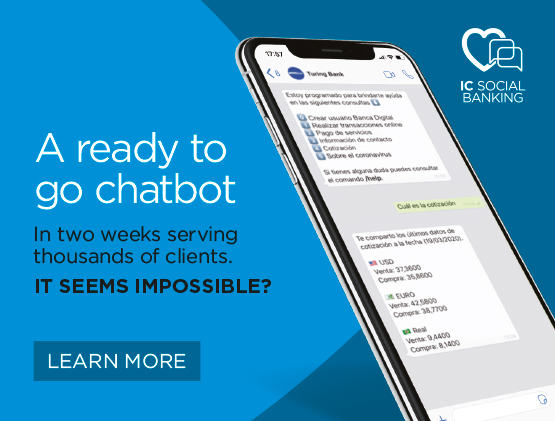
iProUP | September 17, 2021
How does the dynamic of banks where technology is the main focus change?
Few industries were hit as hard as banks, in terms of new competitors and changing paradigms.
Digital transformation, that of transforming the company to conceive it with a digital approach from its very core, is easy to say, but very difficult to execute in institutions, many of which have thousands of employees who move according to an almost century-old inertia and under a regulatory framework that has historically penalized innovation.
However, with greater or lesser progress, all banks are working toward doing the best they can. They have numerous constraints, many of which are cultural, perhaps the most difficult to overcome, but they are making progress.
Currently, many of these slow and heavy animals have converted their teams and systems, and look more up-to-date. The words “innovation areas, design thinking, tribes, agile”, can be heard in the halls of banks, or in the Zooms’ waiting room at present times.
There has definitely been a fantastic advance, especially in digital customer service, or self-service through digital channels. It depends on the country, but in most of Latin America we have examples of 100% digital experiences, where one can create a link with a financial institution without stepping foot in a branch, receive products and self-manage his/her entire experience digitally.
It’s a problem of expectations
The problem banks face isn’t the bank across the street. Today, they are almost a friend. The problem is the new guys, the ones who don’t wear ties and dress in red sneakers, the young people who don’t see how much banking has improved, but see how much it lacks.
The problem are those who were born in a world where playing Playstation with a friend was the same whether the friend lived in their neighborhood or was on the opposite side of the world. That young person (not so young now) wonders why, in order to send money to the same friend, their bank has to know where they are.
If the Playstation never asked for anything, why do I have to know my friend’s bank’s SWIFT code and fill in 9 text fields?
It’s all about experience. The big challenge for banks is how to disguise a global operational model based on the last century, while trying to offer experiences of this century. The real problem is now that young person works, owns a business, and has become a target customer.
That young person is used to a frictionless and personalized experience, based on digital platforms.
They visit Amazon and see a personalized store with products they like to buy, perform tailored searches with Google, and read articles of interest suggested to them by their social network.
Meanwhile, their bank sends them deals for discounts on car accessories and they don’t have a car. It is difficult to generate engagement in this way.
These young people, (who far from being the culprits, are the main motivation for improvement), are much more likely to try a digital financial product from Google or an innovative fintech, than from the bank that spams them via SMS.
Ahí es donde, las fintech y bigtech se destacan, ya no basta con transaccionar desde la app del banco, necesitamos ocultar la complejidad de la industria en un modelo más transparente para estos nuevos clientes, estos que no pueden comparar y entender cuánto mejoró la banca hoy, porque ellos nunca necesitaron ir a una sucursal como nosotros.
That is where fintech and big tech stand out, it is no longer enough to transact from the bank’s app, we need to hide the complexity of the industry in a more transparent model for these new customers, those who cannot compare and understand how much banking has improved because they never had the need to go to a branch like we did.
Personalizing the experience
Imagine opening the bank’s app and it showing you the information you were looking for, or preloading the transfer you were going to make… Is this possible? Of course it is, and this is the concept we have been working on at Infocorp. Let’s not talk about the Bank’s App anymore, let’s talk about the Client’s App. The banking app that transforms according to my usage needs. The banking app that looks and works completely tuned to the needs of the user. It seems reasonable, doesn’t it? Or does an SME do the same as a credit card customer?
We have studied two pillars in millions of audit records from our clients, and they indicate a use pattern: the bond and the context.
If we can understand the bond that the customer has with the bank and the context in which they open the app, our algorithms can predict with outstanding accuracy what the customer is looking for, what to display first, that is, understand, personalize, personalize, personalize.
That’s what it’s all about. Next time you open your bank‘s app, ask yourself: what if it could give me a truly personalized experience?
That experience is the one offered by the “small” banks in the old normal, for closeness to the community, for personal attention, for an understanding of the needs of their customers, for having products tailored to their customers, today, such banks must bet on the same thing that set them apart, what has changed are the tools at their disposal.
By Germán Rama- VP Product- Infocorp
Full article: https://www.iproup.com/economia-digital/24365-bancos-chicos-como-pueden-ganarle-clientes-a-los-gigantes




